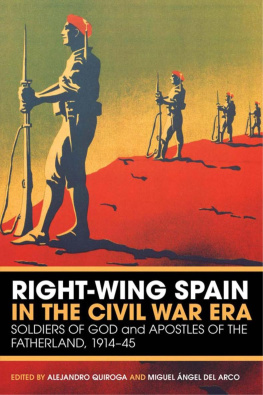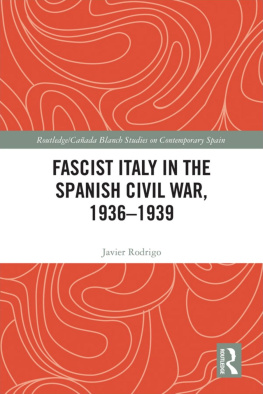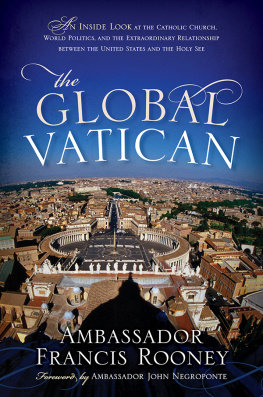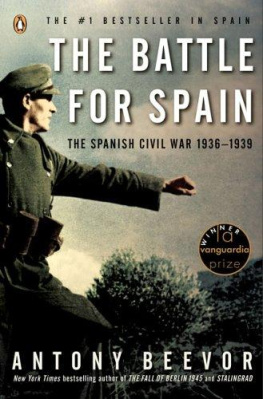
The birth of the Second Spanish Republic in April 1931 ushered in a period of possible secularization to Spain. Liberals welcomed legal changes, while conservatives feared the special privileges they enjoyed would end. The Catholic Church remained a central focus of left-wing antagonism and right-wing allegiances, and conflicts surrounding the future of religion grew severe. While members of the Spanish Catholic hierarchy had clearly supported the right and disdained the left, the actions and opinions of the Vatican and its hierarchy stationed in Spain were much more nuanced. Similarly, when conservative military action plunged Spain into a Civil War in July 1936, the majority of the Spanish Catholic hierarchy openly supported their victory, but the highest levels of the Vatican remained silent.
This book explores the unique position and specialized reactions of the Vatican concerning the Second Republic and Civil War. For the Holy See, the conflict in Spain was not an isolated event at the edge of the continent, but part of a larger narrative of ideological and political tension swirling across Europe. Any public statement by the Vatican concerning the Spanish Republic or Civil War could be misconstrued as support for one side or another, and threaten the Church. True, the Vatican often remained silentand some have suggested this supports the conclusion that the Church worked for Francobut by accessing previously unavailable sources directly from the Vatican, this book can help to clarify the difficult options that awaited the Holy See during this disastrous period. Similarly, this book works to highlight the fact that the Catholic Church was not some monolithic entity, but men like Pope Pius XI and Secretary of State Pacelli had their own understandings of spirituality and politics.
Cover illustration: View of Catedral Vieja, Salamanca, Spain, from Paseo Rector Esperab. Photo: Karl J. Trybus, May 2009 (private collection).
Karl J. Trybus is Assistant Professor of History at Limestone College, South Carolina. He earned his Ph.D. in European History at the University of Connecticut. His research interests focus on the intersections between Vatican diplomacy and Spanish politics during the 1930s. He has presented at a variety of conferences and written articles on the topic.
Dedication
For my mother
Copyright Karl Trybus, 2014.
Published in the Sussex Academic e-Library, 2014.
SUSSEX ACADEMIC PRESS
PO Box 139
Eastbourne BN24 9BP, UK
and simultaneously in the United States of America and Canada
All rights reserved. Except for the quotation of short passages for the purposes of criticism and review, no part of this publication may be reproduced, stored in a retrieval system or transmitted in any form or by any means, electronic, mechanical, photocopying, recording or otherwise, without the prior permission of the publisher.
British Library Cataloguing in Publication Data A CIP catalogue record for this book is available from the British Library.
Library of Congress Cataloging-in-Publication Data
Trybus, Karl J.
The rosary, the republic, and the right : Spain and the Vatican hierarchy, 19311939 / Karl J. Trybus.
pages cm
Includes bibliographical references and index.
ISBN 978-1-84519-614-1 (hbk : alk. paper)
ISBN 978-1-78284-169-2 (e-pub)
ISBN 978-1-78284-170-8 (e-mobi)
ISBN 978-1-78284-171-5 (e-pdf)
1. Catholic ChurchForeign relationsSpain20th century. 2. SpainForeign relationsCatholic Church20th century. 3. Catholic ChurchSpainHistory20th century. 4. SpainPolitics and government19311939. I. Title.
BX1585.T79 2014
327.46045634dc23
2014017868
This e-book text has been prepared for electronic viewing. Some features, including tables and figures, might not display as in the print version, due to electronic conversion limitations and/or copyright strictures.
Acknowledgements
This book represents a long adventure scattered with highs and lows. In the end, however, many people who cared about this project and me allowed this work to be finished. I thank them all.
I must acknowledge the archives that allowed me to complete my project. I wish to thank the Centro Documental de la Memoria Histrica in Salamanca, Spain. I visited this archive in 2005 and 2009, and it was a wonderful experience. I remember requesting numerous boxes of information, photocopies and microfilm rolls. The archivists helped me more than they could have imagined! I would like to thank the Director in 2009, Mara Jos Turrin Garca, for taking the time to meet with me and discuss my projecteven though it was at such an early stage. I also owe a great deal to the Archivio Segreto Vaticano at the Holy See. By opening the files of Pope Pius XI, the ASV has allowed scholars from around the world to understand more clearly the actions and attitudes of the Vatican. I must thank the archivists for their timely copies and well-organized materials. My research from the ASV would not be possible, however, without the help of Dr. Alessandro Visani. Dr. Visani was my guide and expert for Vatican materials. He was able to assist me whenever I needed help. Without Alessandro Visani, this project could not have been completed, and I owe him a severe debt.
I need to thank the two professional organizations that assisted me throughout my graduate and early professional career by allowing me the opportunity to present at their conferences. First, I thank the Association for Spanish and Portuguese History (ASPHS) for their welcoming annual meetings and scholarly professionalism. For all those who sat on panels with me or who were in the audience, thank-you. I wish to give special thanks to former ASPSH Secretary General Dr. Daniel Crews for his constant help. I also want to recognize Dr. Wayne Bowen and Dr. Shannon Fleming for their positive outlook and support for new scholars. Second, I wish to thank the American Catholic Historical Association for its conferences and scholarship. I would specifically like to thank Dr. Charles Gallagher and Dr. Robert Ventresca for their helpful feedback.
Two journals in the field of Spanish history published portions of this book as peer-reviewed articles, and I wish to acknowledge them. First, I thank the Bulletin for Spanish and Portuguese Historical Studies for contains sections of that article. I wish to thank both journals for assisting a new scholar and also for granting permission for these articles to be reproduced, with changes, for this book.
This project began during my time as a graduate student at the University of Connecticut, and there are important individuals that I must recognize for their support. I must begin with the Office of International Affairs at UConnand I must give special thanks to Dr. Elizabeth Mahan and Ludmilla Burns. Without their support, nothing could have ever been finished. In the UConn History Department, I wish to thank Drs. Shirley Roe, Christopher Clark, Lawrence Langer, Brendan Kane, and Charles Lansing. Each of you assisted me with special academic concerns (or trials and tribulations) over the course of my studies. I must thank the two most important people in the History Department: the fabulously retired Dee Gosline made sure I was remembered and the late Nancy Mottes Comarella was the person I could share stories with no matter the time. Without Dee and Nancy, nothing could have been accomplished.






